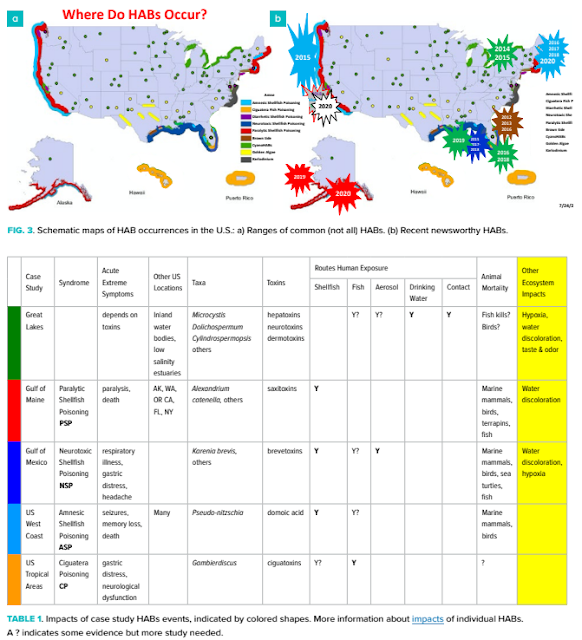The Prevalence of Algal Blooms/Economic Impact

The Prevalence of Algal Blooms Nationally The Centers for Disease Control (CDC) launched One Health Harmful Algal Bloom System (OHHABS) in 2016 to conduct surveillance of Harmful Algal Bloom (HAB) events and to inform/prevent human and animal illnesses associated with them. 18 states reported 421 HAB events, 389 cases of human illness, and 413 cases of animal illness for the duration of 2016-2018. The reporting of data to OHHABS is voluntary, thus not all states are currently reporting and gaps in total number of cases/events exist due to a lack of formal data reporting by most states (Roberts et al., 2020). (WHOI Report, 2021) It is important to note that different algal species contribute to different HAB events around the United States; furthermore, they produce disparate toxins, and the resulting illnesses are just as distinct. Human and animal exposure can also take place in a variety of ways: aerosolized toxins, cons...